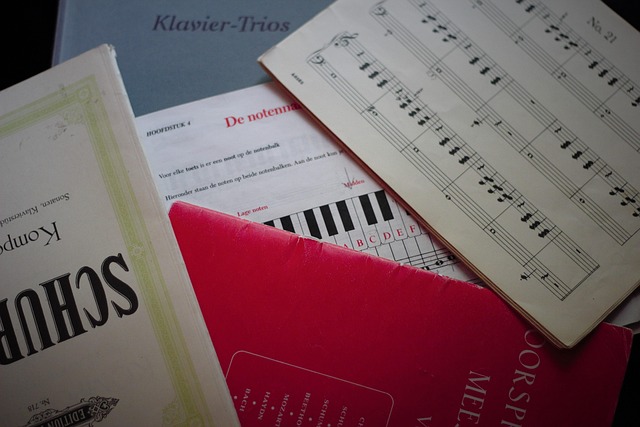【Music】Article four: 'Digital music and critical music literacy'
The Society of Music Analysis report indicated that digital music often sits uncomfortably within a curriculum where the main focus is on the non-digi... [more]
The Society of Music Analysis report indicated that digital music often sits uncomfortably within a curriculum where the main focus is on the non-digi... [more]
Music teacher identity is constructed at the intersection between musician and teacher. This study investigated the meaning of music-making among Kore... [more]
A commonly accepted assumption in music education based on the apprenticeship tradition is that teachers deliver their musical expertise using pedagogically relevant methods that will help them to have effective mastery and control over the process of lea
This paper discusses a particular type of popular song performed in Tunisia, mizwid. It evolved as a result of migrant workers from rural areas moving to the capital, Tunis. Sales figures prove that it now has a huge following; some 80 per cent of the com

In the past, members of the Mushni Khalifa community in Gujarat (India) held a low position in the social hierarchy, a status closely bound up with two of their hereditary occupations, barber and musician. This paper examines changing Khalifa attitudes to
This study, based on recent field research, explores Latino music culture in Toledo, Ohio, and presents strategies for incorporating the music into the classroom. In the ethnographic project, three professors-music educator, ethnomusicologist, folklorist
A study of syncopation in American popular music was carried out based on analyses of sound recordings spanning the period 1890 to 1939. Sample measures were randomly selected and the presence and rhythmic character of syncopations were tabulated. Several
Redundancy reduction has been proposed as the main computational process in the primary sensory pathways in the mammalian brain. This idea has led to the development of sparse coding techniques, which are exploited in this article to extract salient struc

In Study 1 (N = 147), duration of music lessons was correlated positively with IQ and with academic ability among 6- to 11-year-olds, even when potential confounding variables (i.e., family income, parents' education, involvement in nonmusical activities
The ability to create and enjoy music is a universal human trait and plays an important role in the daily life of most cultures. Music has a unique ability to trigger memories, awaken emotions and to intensify our social experiences. We do not need to be
Shaped by a combination of romantic aesthetics and capitalist economics in the 19th century, the musical work was only enshrined in copyright law at the beginning of the 20th. However, even as the distinctiveness of the work was being legally inscribed, t
Voice-to-voice (V2V) encounters are interactions that occur between the company and the customer via a telephone. One critical aspect of the V2V encounter is the waiting time that occurs before the customer talks with a service employee. This article inve

In this paper we describe a new method for discovering recurrent patterns in a corpus of segmented melodies. Elements of patterns in this scheme do not represent individual notes but rather represent melodic segments that are sequences of notes. A new kno
For philosopher Gilles Deleuze, the work of philosophy consists of affirmatively and artistically creating and reworking concepts in response to real-life problems in an ongoing process that invites new perspectives and ways of thinking. Carol Matthews's
This paper presents a representation for melodic segment classes and applies it to music data mining. Melody is modeled as a sequence of segments, each segment being a sequence of notes. These segments are assigned to classes through a knowledge represent
THE RIGORS OF ESTABLISHING INNATENESS and domain specificity pose challenges to adaptationist models of music evolution. In articulating a series of constraints, the authors of the target articles provide strategies for investigating the potential origins
In the present study, a measure to assess the motivational qualities of music in exercise was redesigned, extending previous research efforts (Karageorghis et al., 1999). The original measure, the Brunel Music Rating Inventory (BMRI), had shown limitation